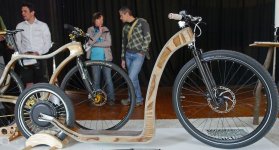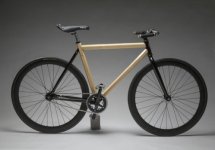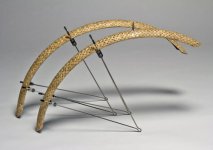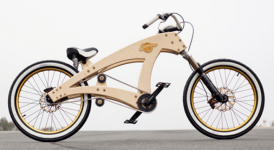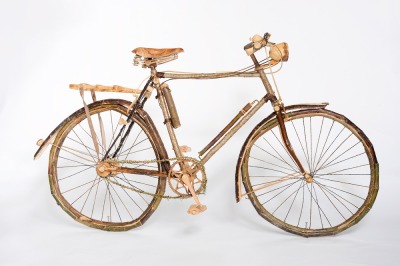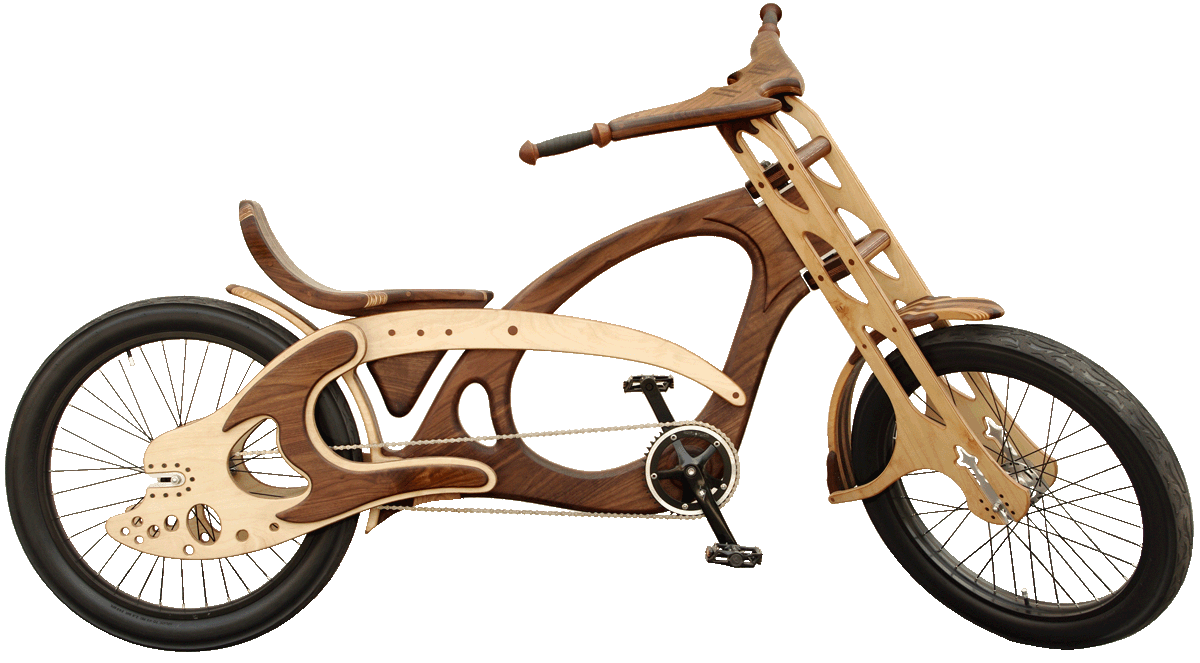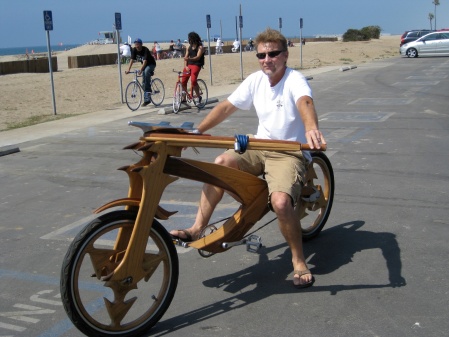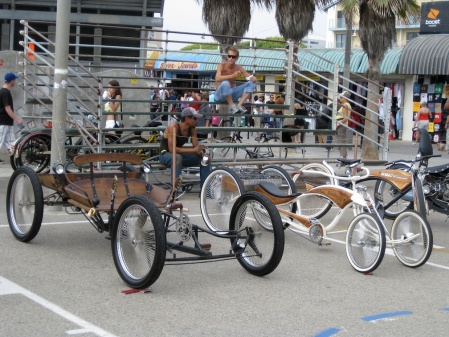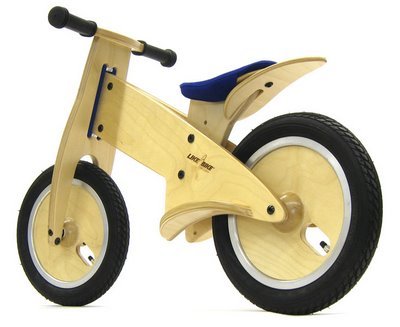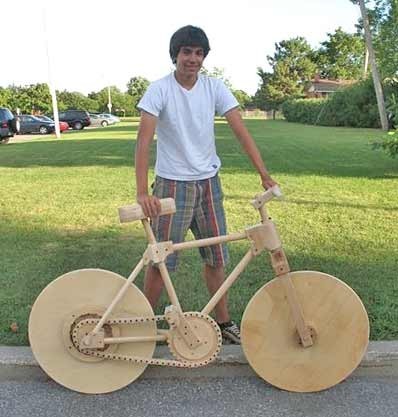"In six months we will have completed planning the first production lines for an urban bike which will be assisted by an electric motor"
http://vimeo.com/37584656
MOSHAV AHITUV, Israel (Reuters) - A bicycle made almost entirely of cardboard has the potential to change transportation habits from the world's most congested cities to the poorest reaches of Africa, its Israeli inventor says.
Izhar Gafni, 50, is an expert in designing automated mass-production lines. He is an amateur cycling enthusiast who for years toyed with an idea of making a bicycle from cardboard.
He told Reuters during a recent demonstration that after much trial and error, his latest prototype has now proven itself and mass production will begin in a few months.
"I was always fascinated by applying unconventional technologies to materials and I did this on several occasions. But this was the culmination of a few things that came together. I worked for four years to cancel out the corrugated cardboard's weak structural points," Gafni said.
"Making a cardboard box is easy and it can be very strong and durable, but to make a bicycle was extremely difficult and I had to find the right way to fold the cardboard in several different directions. It took a year and a half, with lots of testing and failure until I got it right," he said.
Cardboard, made of wood pulp, was invented in the 19th century as sturdy packaging for carrying other more valuable objects, it has rarely been considered as raw material for things usually made of much stronger materials, such as metal.
Once the shape has been formed and cut, the cardboard is treated with a secret concoction made of organic materials to give it its waterproof and fireproof qualities. In the final stage, it is coated with lacquer paint for appearance.
In testing the durability of the treated cardboard, Gafni said he immersed a cross-section in a water tank for several months and it retained all its hardened characteristics.
Once ready for production, the bicycle will include no metal parts, even the brake mechanism and the wheel and pedal bearings will be made of recycled substances, although Gafni said he could not yet reveal those details due to pending patent issues.
"I'm repeatedly surprised at just how strong this material is, it is amazing. Once we are ready to go to production, the bike will have no metal parts at all," Gafni said.
Gafni's workshop, a ramshackle garden shed, is typically the sort of place where legendary inventions are born. It is crammed with tools and bicycle parts and cardboard is strewn everywhere.
One of his first models was a push bike he made as a toy for his young daughter which she is still using months later.
Gafni owns several top-of-the-range bicycles which he said are worth thousands of dollars each, but when his own creation reaches mass production, it should cost no more than about $20 to buy. The cost of materials used are estimated at $9 per unit.
"When we started, a year and a half or two years ago, people laughed at us, but now we are getting at least a dozen e-mails every day asking where they can buy such a bicycle, so this really makes me hopeful that we will succeed," he said.
A ride of the prototype was quite stiff, but generally no different to other ordinary basic bikes.
"GAME CHANGER"
Nimrod Elmish, Gafni's business partner, said cardboard and other recycled materials could bring a major change in current production norms because grants and rebates would only be given for local production and there would be no financial benefits by making bicycles in cheap labor markets.
"This is a real game-changer. It changes ... the way products are manufactured and shipped, it causes factories to be built everywhere instead of moving production to cheaper labor markets, everything that we have known in the production world can change," he said.
Elmish said the cardboard bikes would be made on largely automated production lines and would be supplemented by a workforce comprising pensioners and the disabled.
He said that apart from the social benefits this would provide for all concerned, it would also garner government grants for the manufacturers.
Elmish said the business model they had created meant that rebates for using "green" materials would entirely cancel out production costs and this could allow for bicycles to be given away for free in poor countries.
Producers would reap financial rewards from advertisements such as from multinational companies who would pay for their logo to be part of the frame, he explained.
"Because you get a lot of government grants, it brings down the production costs to zero, so the bicycles can be given away for free. We are copying a business model from the high-tech world where software is distributed free because it includes embedded advertising," Elmish explained.
"It could be sold for around $20, because (retailers) have to make a profit ... and we think they should not cost any more than that. We will make our money from advertising," he added.
Elmish said initial production was set to begin in Israel in months on three bicycle models and a wheelchair and they will be available to purchase within a year.
"In six months we will have completed planning the first production lines for an urban bike which will be assisted by an electric motor, a youth bike which will be a 2/3 size model for children in Africa, a balance bike for youngsters learning to ride, and a wheelchair that a non-profit organization wants to build with our technology for Africa," he said.
CHEAP AND LIGHT
The bicycles are not only very cheap to make, they are very light and do not need to be adjusted or repaired, the solid tires that are made of reconstituted rubber from old car tires will never get a puncture, Elmish said.
"These bikes need no maintenance and no adjustment, a car timing belt is used instead of a chain, and the tires do not need inflating and can last for 10 years," he said.
A full-size cardboard bicycle will weigh around 9 kg (about 20 lbs) compared to an average metal bicycle, which weight around 14 kg.
The urban bicycle, similar to London's "Boris bikes" and others worldwide, will have a mounting for a personal electric motor. Commuters would buy one and use it for their journey and then take it home or to work where it could be recharged.
He said that as bicycles would be so cheap, it hardly mattered how long they lasted.
"So you buy one, use it for a year and then you can buy another one, and if it breaks, you can take it back to the factory and recycle it," he said.
Gafni predicted that in the future, cardboard might even be used in cars and even aircraft "but that is still a way down the road."
"We are just at the beginning and from here my vision is to see cardboard replacing metals ... and countries that right now don't have the money, will be able to benefit from so many uses for this material," he said.
(Writing by Ori Lewis, editing by Paul Casciato)









